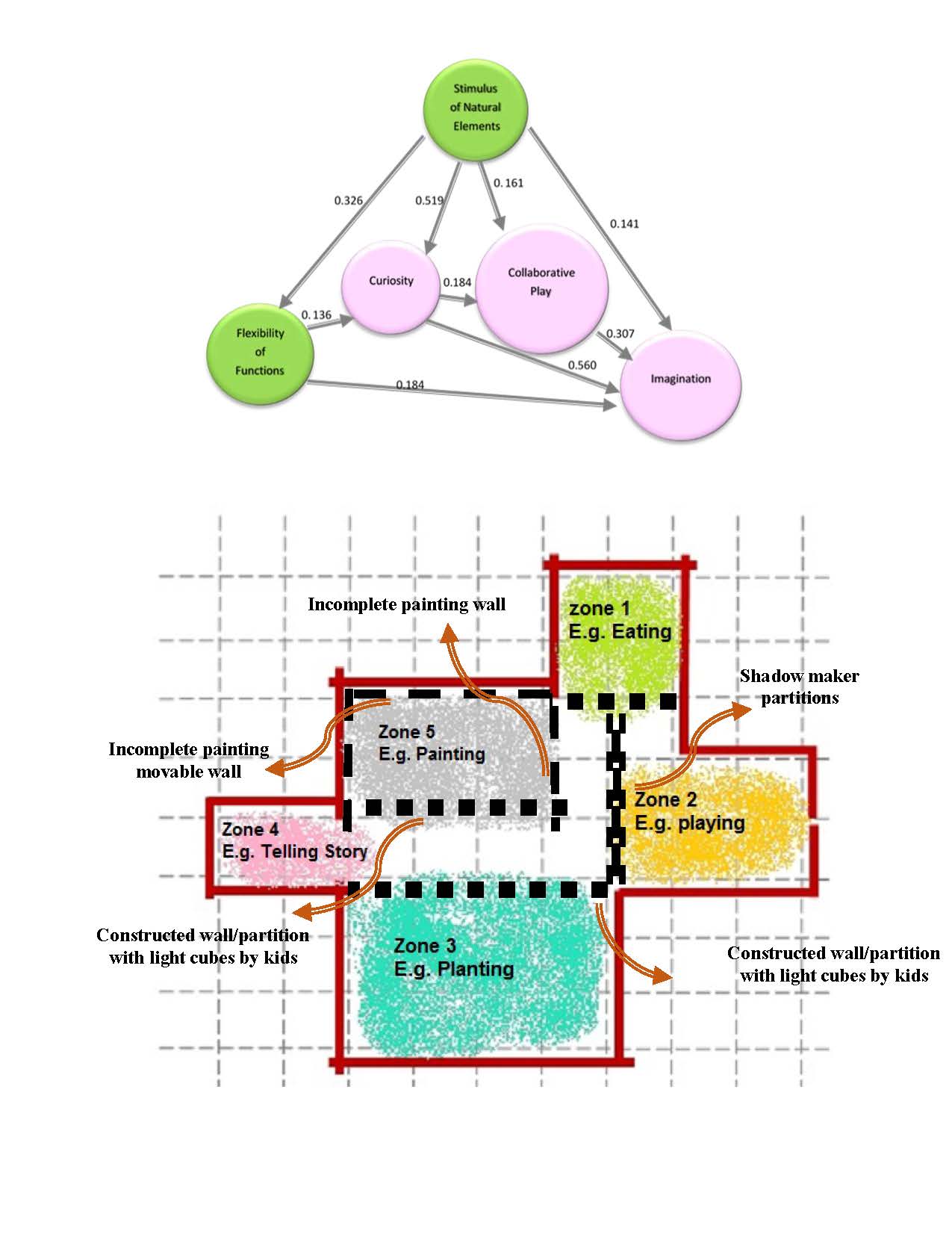BibTeX | RIS | EndNote | Medlars | ProCite | Reference Manager | RefWorks
Send citation to:
URL: http://ijaup.iust.ac.ir/article-1-342-en.html
As recent researches show, creativity is very important in art, technology, science, education, management and etc. Also, preschool ages are a golden time for developing motor creativity. So, it‘s necessary to enhance creativity of preschoolers. Many scholars have studied cognitional-emotional aspects of creativity. Some, have focused on the creativity process and creativity techniques. But, the relation between creativity and physical environment have been rarely studied. The goal of this research, is exploring design patterns which may help architects to design suitable spaces to enhance kids’ creativity. The question is “which architectural variables affect kids' creativity positively”. Survey research method is used to gathering questionnaires of kindergarten mentors, architects, psychologist and preschoolers. Factor analysis showed the effective variables (factors) that were known and labeled. Creativity variables were “imagination”, “curiosity” and “cooperative play”. The variables of physical environment were “flexibility” and “variety”. To find the relation between three creativity variables and two architecture variables, the path analysis method was used. The correlation of creativity variables and architectural ones was significantly positive. Then, 72 architects and psychologists were tested with an open end test. Design patterns were extracted from architects and psychologists suggestions. The results were discussed in a session with 20 children to explore kids taste about them. The outcome was design patterns such as: a) Design of modular wide open plan with several corners; b) Design puzzled Shadow maker partitions; c) Using light modular furniture such as light cubes that kids could move and rearrange them to make new furniture/walls; d) Using incomplete paintings, on the wall or on the ground; e) Design vast planting areas that kids could plant in groups.
| Rights and permissions | |
 | This work is licensed under a Creative Commons Attribution-NonCommercial 4.0 International License. |






